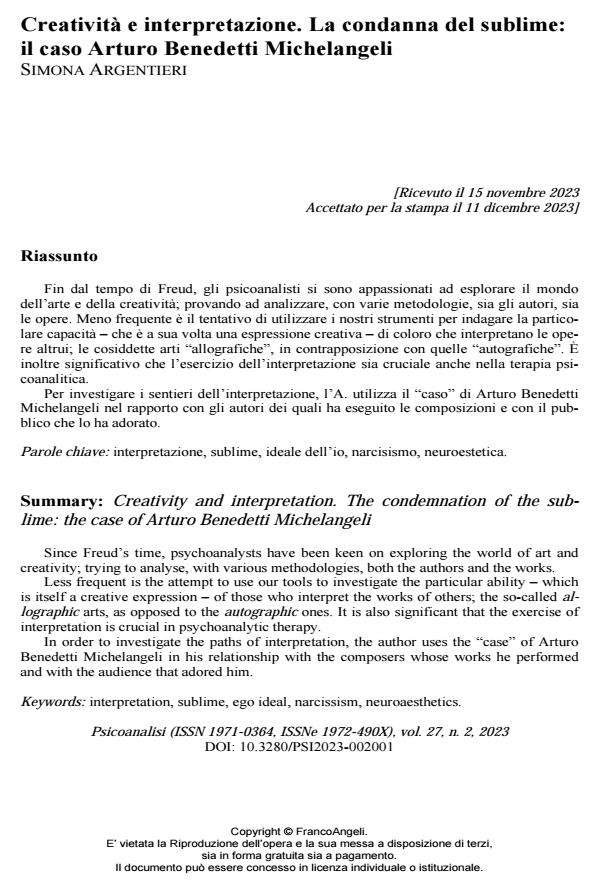Creativity and interpretation. The condemnation of the sublime: the case of Arturo Benedetti Michelangeli
Journal title PSICOANALISI
Author/s Simona Argentieri
Publishing Year 2024 Issue 2023/2
Language Italian Pages 20 P. 5-24 File size 197 KB
DOI 10.3280/PSI2023-002001
DOI is like a bar code for intellectual property: to have more infomation
click here
Below, you can see the article first page
If you want to buy this article in PDF format, you can do it, following the instructions to buy download credits

FrancoAngeli is member of Publishers International Linking Association, Inc (PILA), a not-for-profit association which run the CrossRef service enabling links to and from online scholarly content.
Since Freud’s time, psychoanalysts have been keen on exploring the world of art and creativity; trying to analyse, with various methodologies, both the authors and the works. Less frequent is the attempt to use our tools to investigate the particular ability – which is itself a creative expression – of those who interpret the works of others; the so-called allographic arts, as opposed to the autographic ones. It is also significant that the exercise of interpretation is crucial in psychoanalytic therapy. In order to investigate the paths of interpretation, the author uses the “case” of Arturo Benedetti Michelangeli in his relationship with the composers whose works he performed and with the audience that adored him.
Keywords: interpretation, sublime, ego ideal, narcissism, neuroaesthetics.
Simona Argentieri, Creatività e interpretazione. La condanna del sublime: il caso Arturo Benedetti Michelangeli in "PSICOANALISI" 2/2023, pp 5-24, DOI: 10.3280/PSI2023-002001